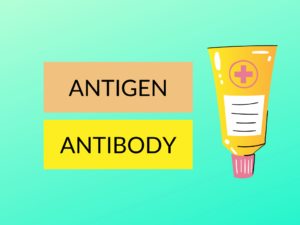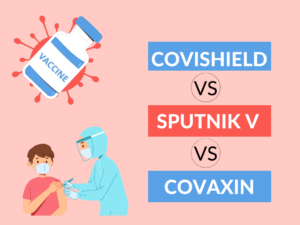Engaging 50 word intro:
Vaccines and sera are both important tools used in medicine to combat diseases and provide immunity. While they may seem similar, they have distinct differences in terms of their composition, uses, and modes of action. Join us as we explore the fascinating world of vaccines and sera and unravel the disparities between these two crucial entities.
What is/are vaccine?
A vaccine is a biological preparation that stimulates the immune system to produce immunity against a specific disease. It contains an antigen derived from pathogenic viruses, bacteria, or toxins, but in a weakened or inactivated form. This allows the immune system to recognize and remember the specific pathogen, leading to a faster response when exposed to the actual infectious agent. Vaccines are designed to prevent disease and protect individuals from future infections.
Examples of vaccines:
1. Polio vaccine: Provides immunity against poliomyelitis, a highly infectious viral disease.
2. Measles vaccine: Protects against measles, a contagious viral infection causing rash and fever.
3. Tetanus vaccine: Prevents tetanus, a bacterial infection primarily caused by contaminated wounds.
4. Influenza vaccine: Offers protection against different strains of the influenza virus responsible for seasonal flu.
Uses of vaccines:
1. Prevention of diseases: Vaccines are primarily employed to prevent contagious diseases and decrease their severity.
2. Herd immunity: Widespread vaccination can indirectly protect vulnerable individuals who are unable to receive vaccines (e.g., infants or people with compromised immune systems).
3. Eradication of diseases: Vaccination campaigns have played a crucial role in the global eradication of diseases like smallpox and near-eradication of polio.
What is/are sera?
Sera, also known as antiserum, refers to the blood plasma of animals or humans that contain antibodies against a specific antigen. Sera is obtained by extracting blood and isolating the serum portion, which contains a concentrated amount of antibodies. These antibodies provide passive immunity or temporary protection against specific diseases, as they are ready-made and can neutralize pathogens.
Examples of sera:
1. Snake antivenom: Derived from the serums of horses, it is used to treat snake bites and counteract the venom’s effects.
2. Rabies immunoglobulin (RIG): Administered after a suspected exposure to rabies, it provides immediate protection against the virus.
3. Hepatitis B immune serum globulin (HBIG): Contains antibodies against the hepatitis B virus and is given to individuals who have been recently exposed to the virus.
Uses of sera:
1. Emergency treatment: Sera is commonly used in emergency situations, such as immediate treatment for life-threatening venomous snake bites, rabies exposure, or hepatitis B infection.
2. Passive immunization: Sera is administered to individuals who need immediate protection against a specific disease, without relying on the body’s immune response.
3. Research and diagnostics: Sera is used in laboratories for various research purposes, such as studying antibody-antigen interactions or developing diagnostic tests.
Differences Table:
| Difference Area | Vaccine | Sera |
|---|---|---|
| Preparation | Contains weakened or inactivated pathogenic agents | Contains concentrated antibodies |
| Induces | Active immunity | Passive immunity |
| Mode of action | Stimulates the immune system to produce antibodies | Provides pre-formed antibodies |
| Primary objective | Disease prevention | Immediate treatment |
| Protection duration | Long-term | Short-term |
| Immune response strength | Varies depending on individual’s immune system | Immediate, highly effective |
| Administration | Injected or given orally | Injected |
| Availability | Prophylactic, widely available | Emergency use, limited availability |
| Primary target population | Healthy individuals | Affected or exposed individuals |
| Immunization response | Develops immunity over time | Immediate protection |
Conclusion:
In summary, vaccines and sera serve distinct purposes in the realm of disease prevention and treatment. Vaccines aim to stimulate the body’s immune system to produce long-term immunity, while sera provide immediate, short-term protection via pre-formed antibodies. Vaccines are widely available and focus on prevention, while sera are limited in availability and mainly utilized in emergency situations. Both play critical roles in combating diseases and safeguarding public health.
People Also Ask:
1. What is the difference between vaccines and sera?
Vaccines are composed of weakened or inactivated pathogens to stimulate active immunity, while sera contain concentrated antibodies for immediate, passive immunity.
2. How do vaccines work?
Vaccines stimulate the immune system to recognize and remember specific pathogens, preparing it for a faster response when exposed to the actual infectious agent.
3. Can a vaccine replace the need for sera?
No, vaccines cannot entirely replace sera, as sera provide immediate protection with pre-formed antibodies, whereas vaccines require time to develop immunity.
4. Why are vaccines given in multiple doses?
Multiple doses of vaccines are often necessary to ensure a robust and long-lasting immune response, especially when dealing with complex diseases or viruses that mutate quickly.
5. Can sera be used as a long-term solution?
No, sera provide temporary protection and are typically used as emergency treatments or for immediate short-term immunity rather than long-term prevention.



